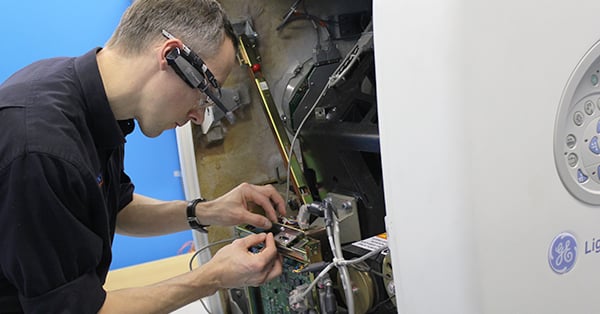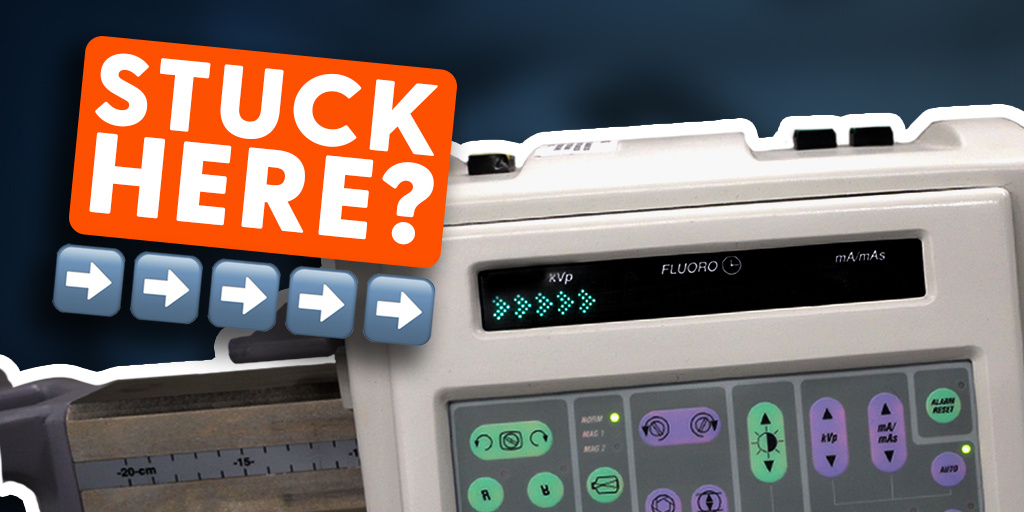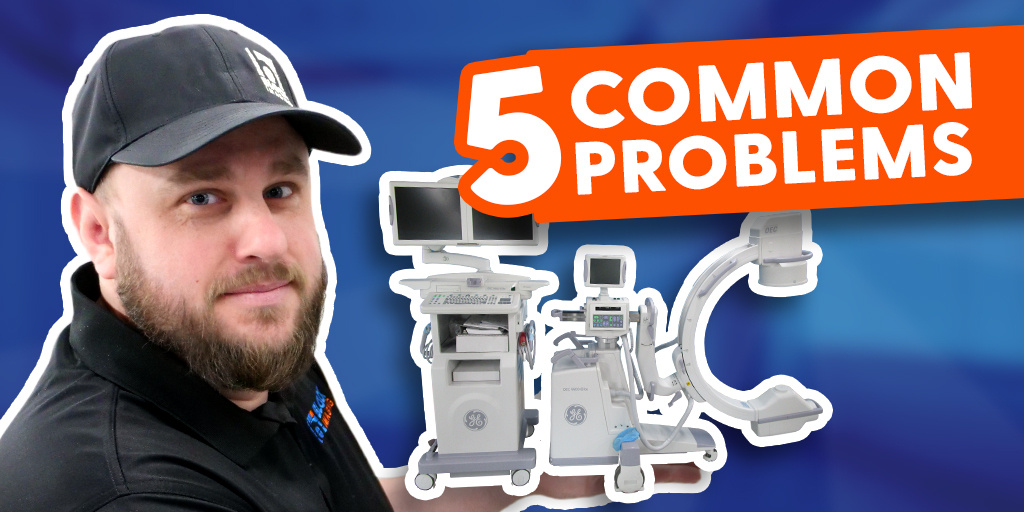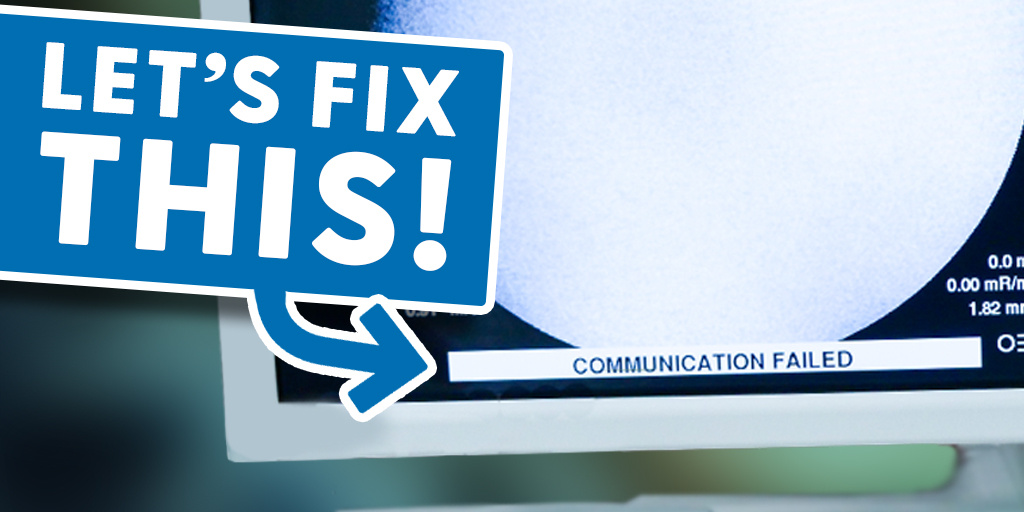
September 23, 2020 : 4 min read
Problems with the Right-to-Repair Conversation
If you are not yet familiar with The Critical Medical Infrastructure Right-to-Repair Act of 2020, “Right to Repair” for short, here’s some quick background. The bill was introduced on August 6th by Sen. Ron Wyden of Oregon and Rep. Yvette Clark of New York in response to concerns that repairs and maintenance on medical equipment were being hampered by restrictive contracts and copyright laws during the COVID-19 crisis.
A statement from Senator Wyden’s website describes the bill’s specifics, saying that, for at least the duration of the COVID-19 pandemic, it would:
- Protect equipment owners, lessees, and servicers from liability under federal copyright law for creating an incidental copy of service materials or for breaking a digital lock during the course of equipment repair in response to COVID-19;
- Allow equipment owners or lessees to fabricate patented parts on a non-commercial basis and as needed for repair or maintenance in response to COVID-19;
- Invalidate provisions in equipment contracts to the extent that they prohibit or restrict the repair or maintenance of critical medical infrastructure in response to COVID-19;
- Require manufacturers to provide, on fair and reasonable terms, access to information and tools used to diagnose problems and service, maintain, or repair equipment; and
- Require the Federal Trade Commission to evaluate the bill’s impact and effectiveness on innovation and competition in the critical medical infrastructure market.
The bill has garnered praise and support from rural healthcare systems, independent engineering groups, and many civil interest groups but, unsurprisingly, has come under fire from OEMs and their partner lobbying groups.
I have read many articles against Right-to-Repair in the last few weeks, all of which suppose an inadequacy and lack of ability among third-party service providers to service and maintain medical imaging equipment safely. Being a part of a third-party service organization myself, and knowing that what’s being written about our capabilities is untrue, I've decided to share the other side of the discussion about what other third-party service groups are capable of and why original equipment manufacturers (OEMs) want to discredit those capabilities.
Patient Safety
Most organizations that oppose Right-to-Repair cite concern over patient safety as the main reason for their opposition. Their central assertion is that, because third-party servicers aren’t under the same regulations that OEMs are, only an OEM can be counted on to provide service that won’t endanger lives. Some of their opinion pieces paint third-party providers as everything from well-intentioned but dangerous and incompetent, to purporting problems that don’t exist. This negative spectrum makes no allowance for the significant number of third-party groups that are ISO certified for quality and safety procedures. It makes no allowance for the thousands upon thousands of service calls that are completed successfully and safely by third-party engineers each year. And it makes no allowance for the thousands of people like me, who work at companies like mine, that actually care very deeply about the safety of patients.
Quality Standards
Another opposing assumption surrounding Right-to-Repair is that third-party service organizations fear standardization. This is an inaccurate generalization. As an example from our own experience, in February 2019, OEM ally and Right-to-Repair opponent, MITA (Medical Imaging and Technology Alliance) issued a standards whitepaper titled Requirements for Servicing of Medical Imaging Equipment. While adherence to the standards outlined in the whitepaper is voluntary, Block Imaging’s President of Parts and Service, Jason Crawford described it in an April 2019 blog post as, “…immediately recognizable by any legitimate service organization as a practical baseline to effectively and safely service imaging equipment.” Simply put, there are third-party providers who value the opportunity to hold their service to a high standard and already do so willingly.
If Right-to-Repair Succeeds
While OEMs leverage fear of injury or death to dissuade medical facilities from working with third-party service, what they’re not mentioning is what they stand to lose if Right-to-Repair succeeds. In most cases, an OEM is the most expensive option for service, support, and parts. Why? They would have you believe it’s because of their unrivalled quality. But at Block Imaging, we know we can provide high quality too. Our QC certifications, service training certifications, former OEM engineer experience, and 98% equipment uptime guarantee show our competence. OEMs are the most expensive service option because they can be. With a proprietary hold on system access, service tools, and data keys, OEMs have an upper hand in influencing the cost of service. Currently, the direction of that influence is painfully high for private practices, standalone imaging centers, and rural medical facilities. The intent of Right-to-Repair is to empower third-party providers to expand the availability of affordable service options to facilities like these.
If Right-to-Repair Fails
To be clear, Right-to-Repair proponents aren’t out to assert that OEM service is ineffective, unsafe, or otherwise bad, rather, we hope to encourage people to look at another facet of the issue. If Right-to-Repair fails, OEMs retain millions of service dollars. The allocation of these dollars toward costly OEM service contracts adds to the colossal cost of healthcare in America and hurts the bottom line of smaller facilities that, while they struggle with revenue and cashflow, offer crucial access to underserved areas of the country.
Vetting Service Providers
If you don’t wish to simply take one side’s word when you choose your service provider, a little homework will go a long way. While not all third-party providers are created equal, safety and quality are available outside the OEMs. We recommend every facility vet third-party vendors and OEMs, and not just regarding safety. Many people take it for granted that they’ll be more satisfied with the overall experience of being an OEM service customer. Our experience is that third-party customers left OEMs for valid reasons, and they rarely go back after they've made the switch.
If you’re considering a third-party or OEM service, here are 4 easy ways to vet prospective providers:
- Are they ISO9001:2016 or 13485:2016 certified? 9001 is the base of 13485, so certification in either of these standards indicates documented and approved quality and safety controls.
- Do you have a vendor approval process? If so, apply it. Don’t let an OEM engineer skirt it just because they work for an OEM.
- Does the third-party have a vendor approval process? This makes sure that anyone your third party may be hiring to help them meets the same requirements their team members do.
- Get to know your third-party vendor or OEM. Be curious. Ask questions about the local engineers’ capabilities, you might be surprised about what you learn.
Contrary to what OEMs and OEM supporters want you to believe, there are third-party providers out there who can stand up to a thorough vetting, keep your equipment serving patients safely, and help keep the cost of service and healthcare down. And, with a little help from Right-to-Repair, they can take it even further, or at least be equipped to compete on a level playing field.
What You Can Do
With Right-to-Repair in effect, imaging facilities can reap benefits like cost savings, improved service response times, and healthy competition among providers. On top of that, you can be a part of something that will change the future landscape of healthcare. We ask that you lend your voice to support The Critical Medical Infrastructure Right-to-Repair Act of 2020 by sending an email, writing a letter, or making a call to your senator or state representative. As Helen Keller so eloquently put it, “Alone we can do so little, but together we can do so much.”

Trish Payne
Trish Payne is Block Imaging’s OEM and FDA Liaison. Trish is passionate about understanding the causes of challenges and working collaboratively to overcome them for the good of the imaging industry and the healthcare providers it serves. In addition to keeping Block Imaging’s work in step with industry standards, Trish is a wife, mother of two, tennis player, and world traveler.




